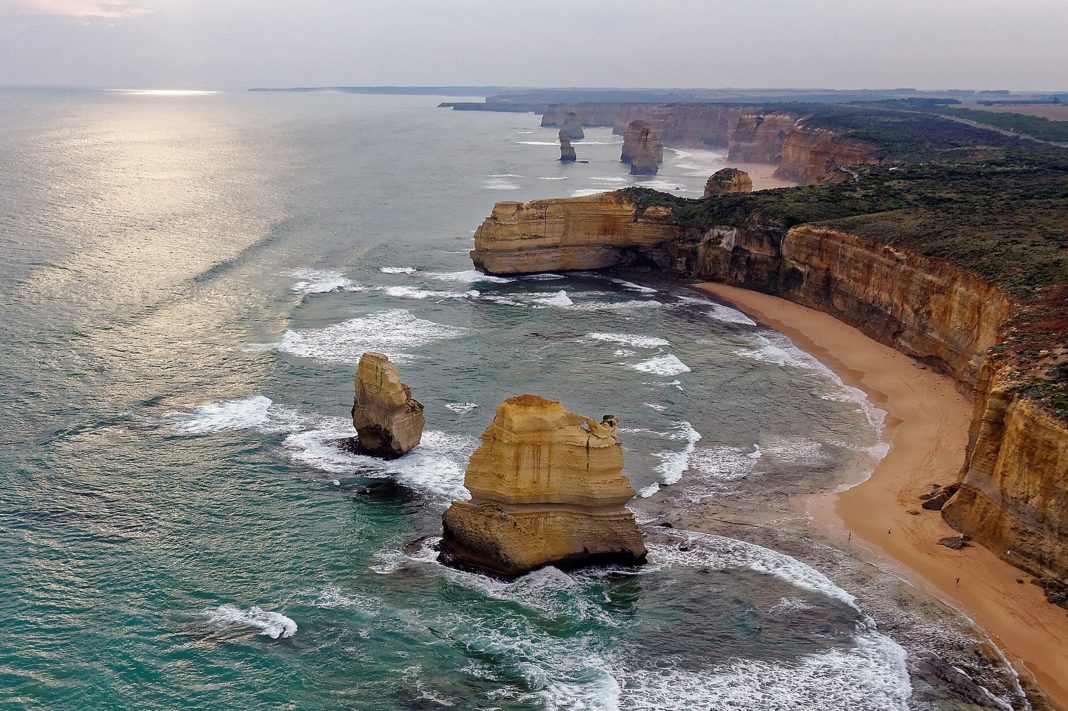The Great Ocean Road is an Australian National Heritage listed 240-kilometer stretch of road along the south-eastern coast of Australia between the Victorian cities of Torquay and Allansford. Built by returned soldiers between 1919 and 1932 and dedicated to soldiers killed during World War I, the road is the world’s largest war memorial. Winding through varying terrain along the coast and providing access to several prominent landmarks, including the Twelve Apostles limestone stack formations, the road is an important tourist attraction in the region.
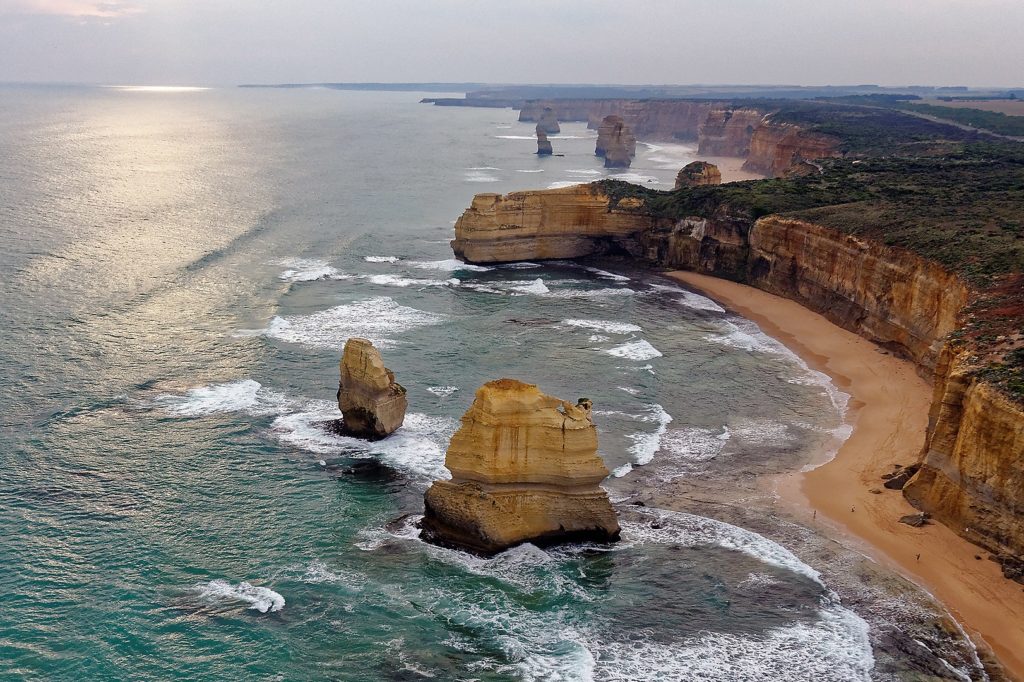
The Twelve Apostles are a collection of limestone stacks off the shore of Port Campbell National Park, by the Great Ocean Road in Victoria, Australia.
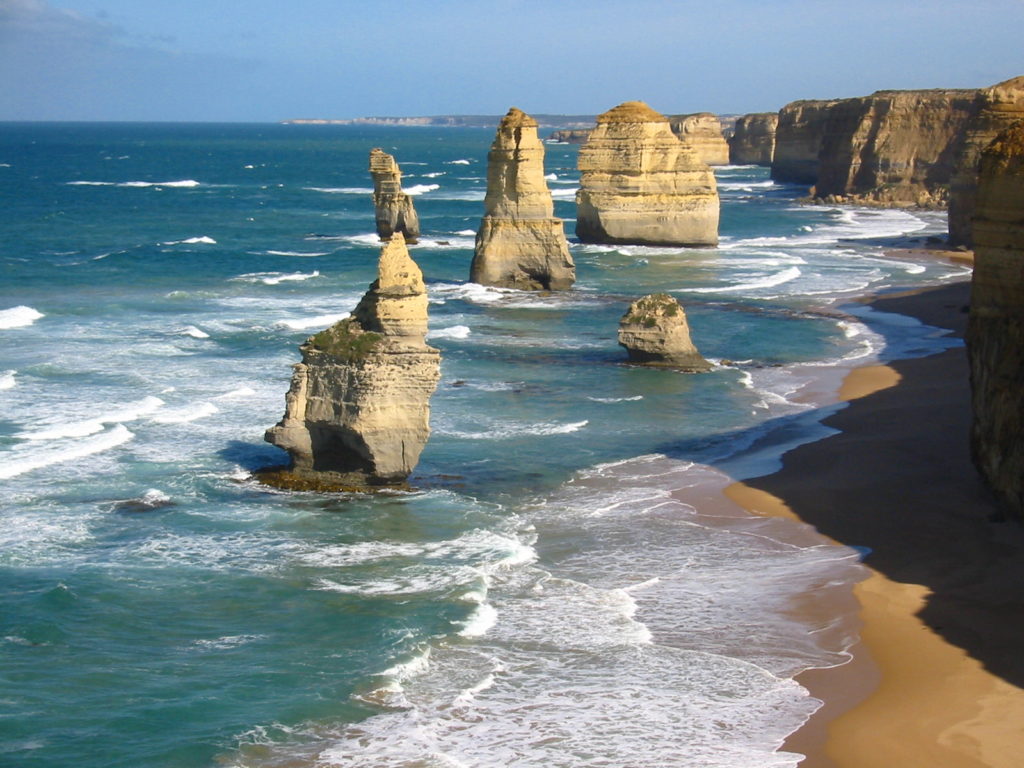
Their proximity to one another has made the site a popular tourist attraction. The limestone unit that forms The Twelve Apostles is referred to as the Port Campbell Limestone, which was deposited in the Mid-Late Miocene, around 15 to 5 million years ago.
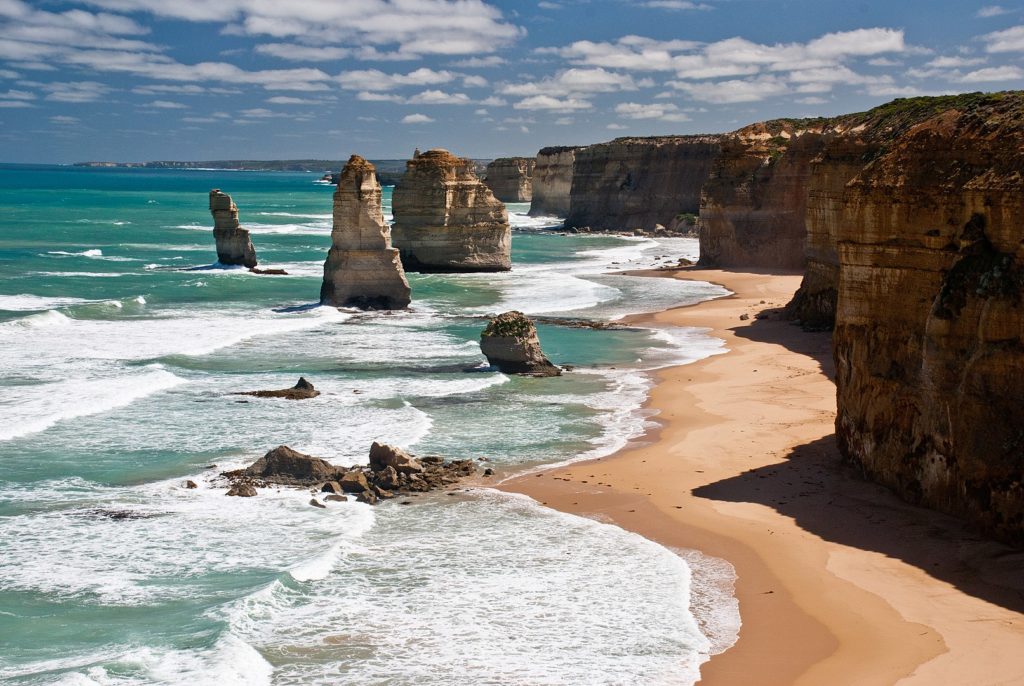
The Twelve Apostles were formed by erosion. The harsh and extreme weather conditions from the Southern Ocean gradually eroded the soft limestone to form caves in the cliffs, which then become arches that eventually collapse, leaving rock stacks up to 50 m high. The stacks are susceptible to further erosion from waves. In July 2005, a 50-meter-tall stack collapsed, leaving seven standing at the Twelve Apostles’ viewpoint. Due to wave action eroding the cliffs, existing headlands are expected to become new limestone stacks in the future.
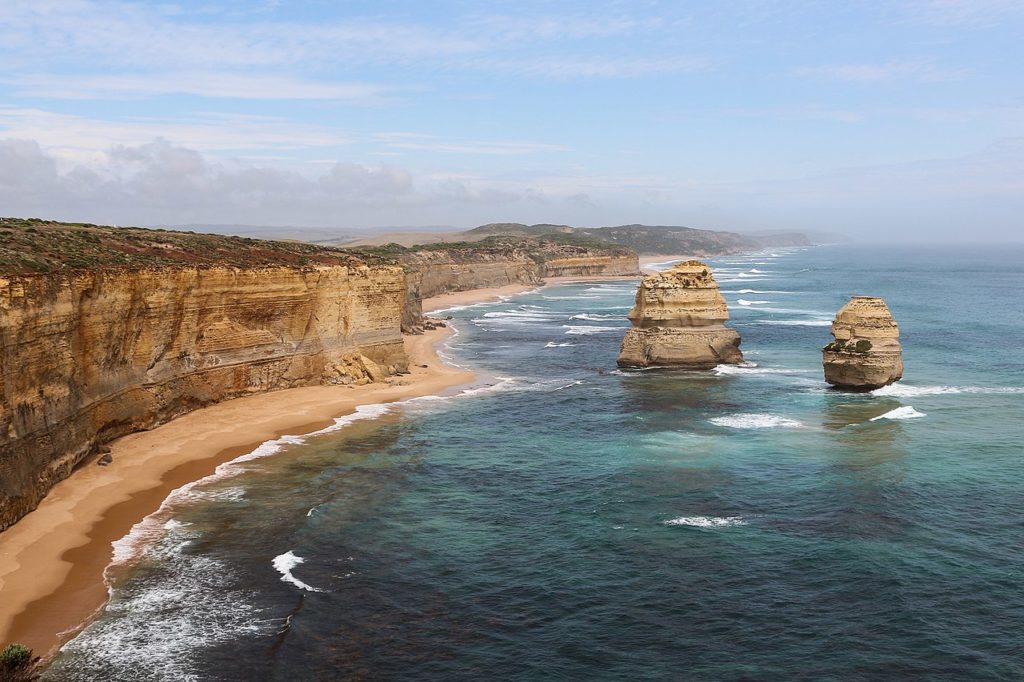
The stacks were originally known as the Pinnacles, and the Sow and Pigs (or Sow and Piglets, with Muttonbird Island being the Sow and the smaller rock stacks being the Piglets), as well as the Twelve Apostles. The formation’s name was made official as the Twelve Apostles, despite only ever having had eight stacks.
According to the Internet





